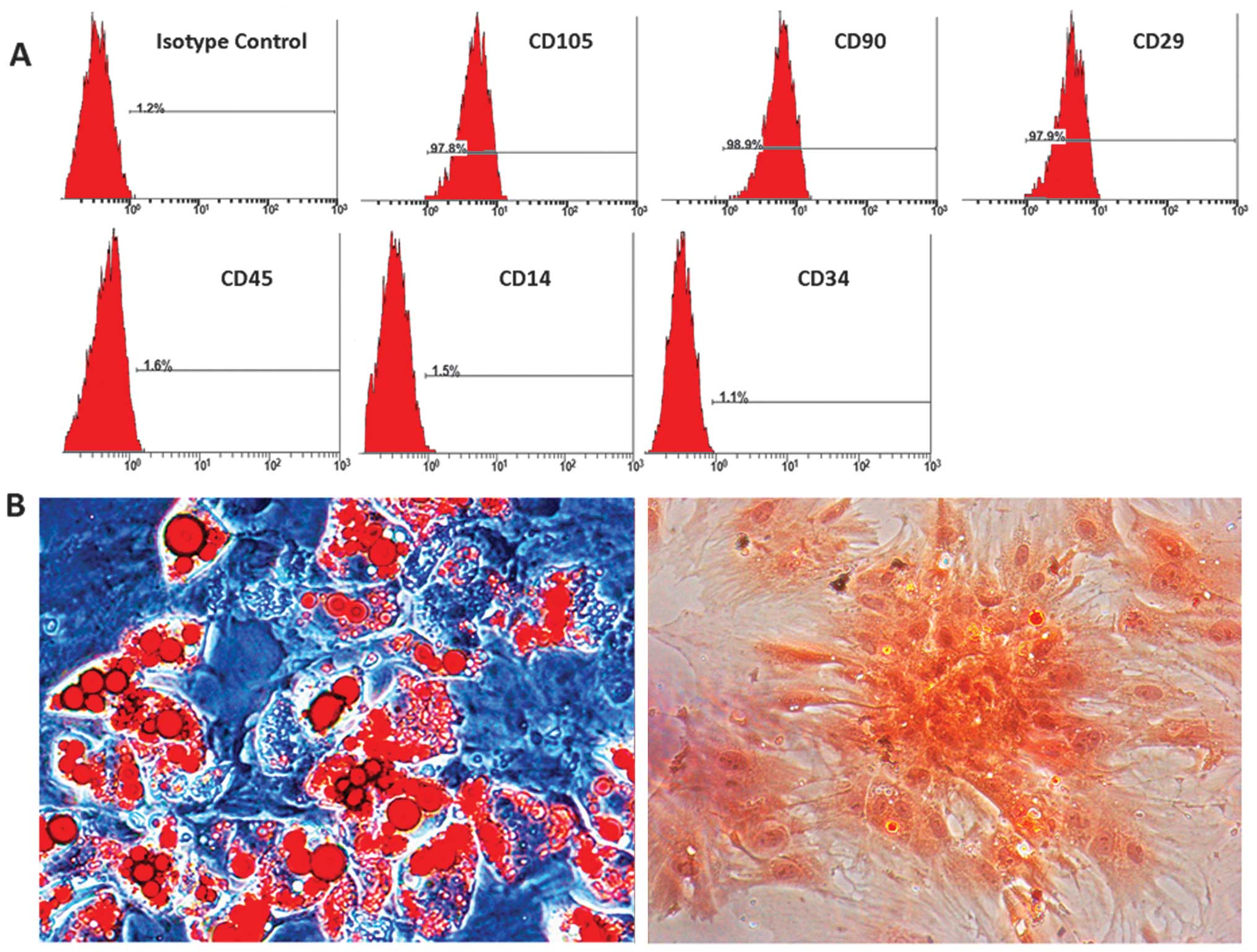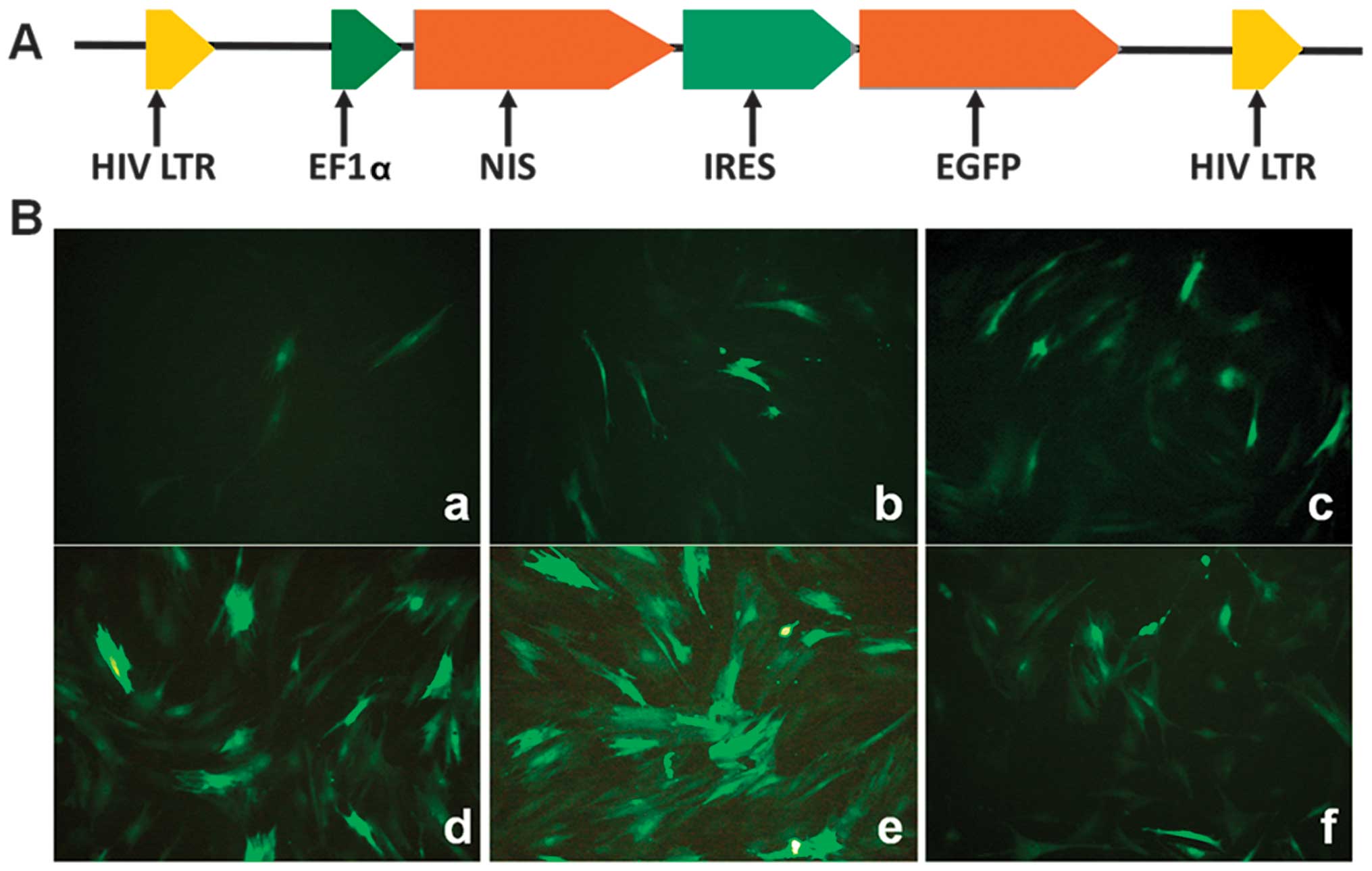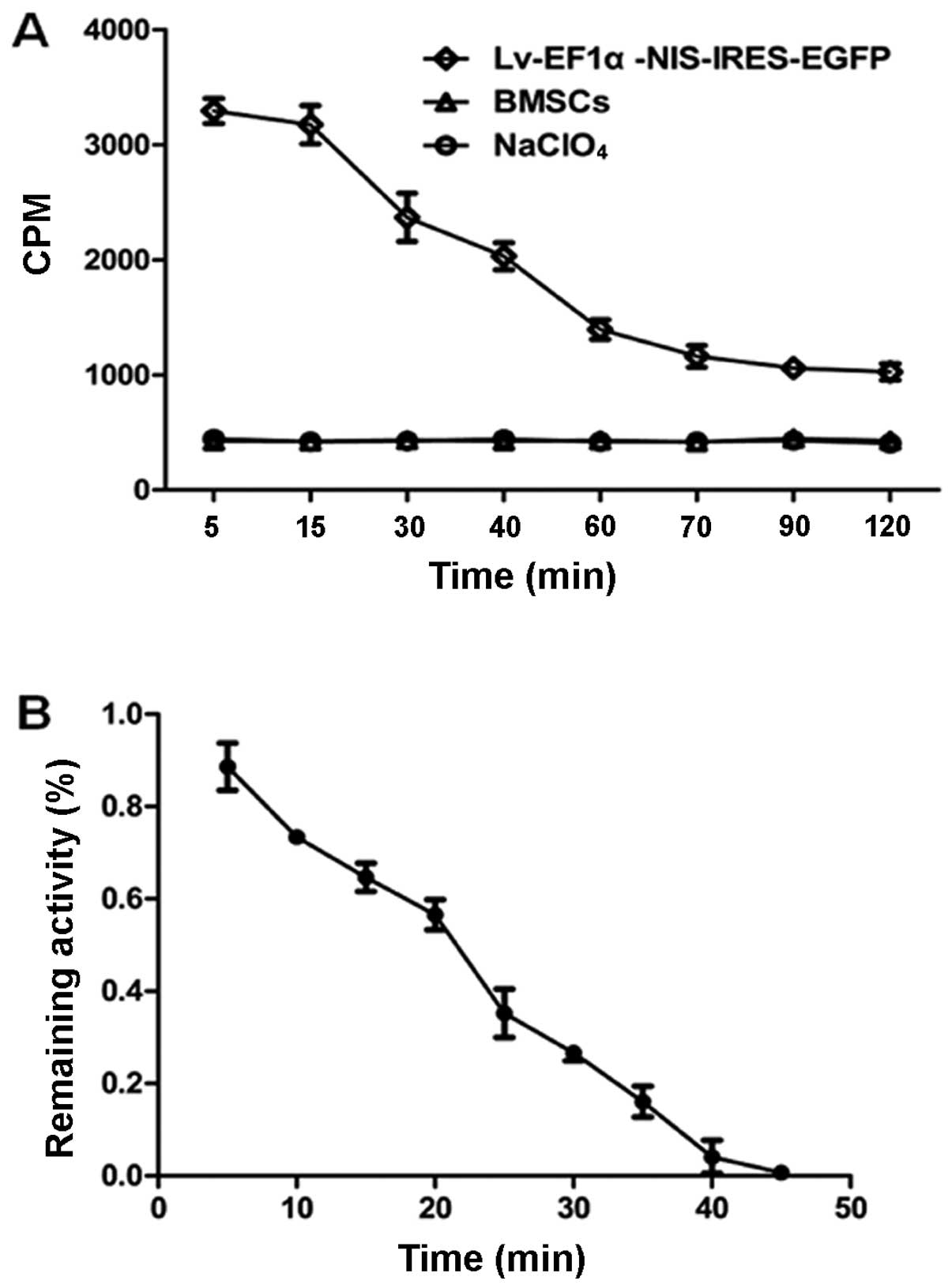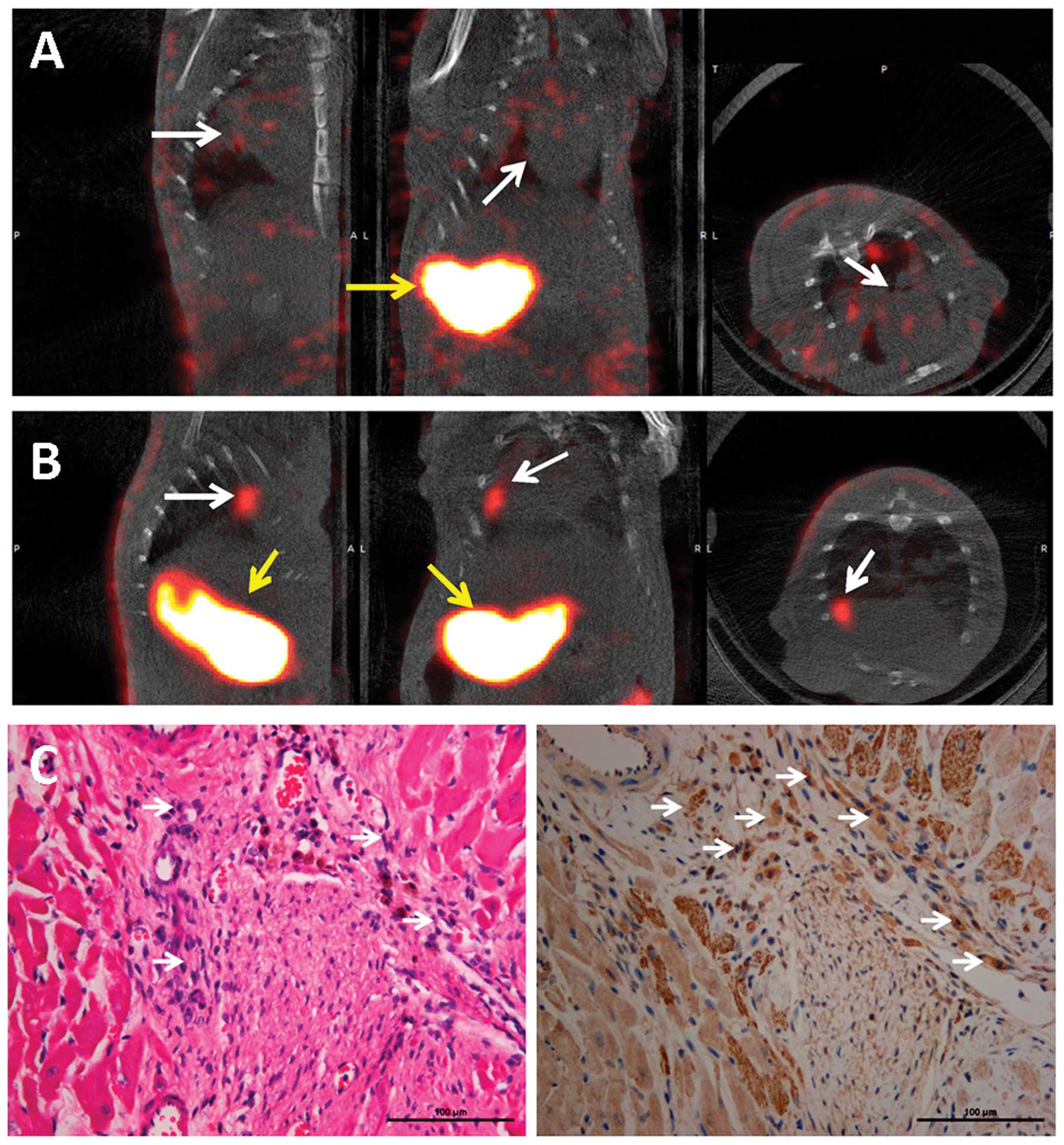|
1
|
Hess DC and Borlongan CV: Stem cells and
neurological diseases. Cell Prolif. 41(Suppl 1): 94–114. 2008.
View Article : Google Scholar
|
|
2
|
Jitschin R, Mougiakakos D, Von Bahr L, et
al: Alterations in the cellular immune compartment of patients
treated with third-party mesenchymal stromal cells following
allogeneic hematopoietic stem cell transplantation. Stem Cells.
31:1715–1725. 2013. View Article : Google Scholar
|
|
3
|
Wang CH, Cherng WJ, Yang NI, et al:
Late-outgrowth endothelial cells attenuate intimal hyperplasia
contributed by mesenchymal stem cells after vascular injury.
Arterioscler Thromb Vasc Biol. 28:54–60. 2008. View Article : Google Scholar : PubMed/NCBI
|
|
4
|
Shichinohe H, Kuroda S, Maruichi K, et al:
Bone marrow stromal cells and bone marrow-derived mononuclear
cells: which are suitable as cell source of transplantation for
mice infarct brain? Neuropathology. 30:113–122. 2010.PubMed/NCBI
|
|
5
|
Zou D, Zhang Z, Ye D, et al: Repair of
critical-sized rat calvarial defects using genetically engineered
bone marrow-derived mesenchymal stem cells overexpressing
hypoxia-inducible factor-1α. Stem Cells. 29:1380–1390.
2011.PubMed/NCBI
|
|
6
|
Liu N, Patzak A and Zhang J:
CXCR4-overexpressing bone marrow-derived mesenchymal stem cells
improve repair of acute kidney injury. Am J Physiol Renal Physiol.
305:F1064–F1073. 2013. View Article : Google Scholar : PubMed/NCBI
|
|
7
|
Chi NH, Yang MC, Chung TW, Chen JY, Chou
NK and Wang SS: Cardiac repair achieved by bone marrow mesenchymal
stem cells/silk fibroin/hyaluronic acid patches in a rat of
myocardial infarction model. Biomaterials. 33:5541–5551. 2012.
View Article : Google Scholar : PubMed/NCBI
|
|
8
|
Huang B, Qian J, Ma J, et al: Myocardial
transfection of hypoxia-inducible factor-1alpha and
co-transplantation of mesenchymal stem cells enhance cardiac repair
in rats with experimental myocardial infarction. Stem Cell Res
Ther. 5:222014. View
Article : Google Scholar : PubMed/NCBI
|
|
9
|
Takahashi M, Li TS, Suzuki R, et al:
Cytokines produced by bone marrow cells can contribute to
functional improvement of the infarcted heart by protecting
cardiomyocytes from ischemic injury. Am J Physiol Heart Circ
Physiol. 291:H886–H893. 2006. View Article : Google Scholar : PubMed/NCBI
|
|
10
|
Wang Y, Liu XC, Zhang GW, et al: A new
transmyocardial degradable stent combined with growth factor,
heparin, and stem cells in acute myocardial infarction. Cardiovasc
Res. 84:461–469. 2009. View Article : Google Scholar : PubMed/NCBI
|
|
11
|
Barbash IM, Chouraqui P, Baron J, et al:
Systemic delivery of bone marrow-derived mesenchymal stem cells to
the infarcted myocardium: feasibility, cell migration, and body
distribution. Circulation. 108:863–868. 2003. View Article : Google Scholar : PubMed/NCBI
|
|
12
|
Grajek S, Popiel M, Gil L, et al:
Influence of bone marrow stem cells on left ventricle perfusion and
ejection fraction in patients with acute myocardial infarction of
anterior wall: randomized clinical trial: Impact of bone marrow
stem cell intracoronary infusion on improvement of
microcirculation. Eur Heart J. 31:691–702. 2010.
|
|
13
|
Hoehn M, Küstermann E, Blunk J, et al:
Monitoring of implanted stem cell migration in vivo: a highly
resolved in vivo magnetic resonance imaging investigation of
experimental stroke in rat. Proc Natl Acad Sci USA. 99:16267–16272.
2002. View Article : Google Scholar : PubMed/NCBI
|
|
14
|
Bulte JW and Kraitchman DL: Iron oxide MR
contrast agents for molecular and cellular imaging. NMR Biomed.
17:484–499. 2004. View
Article : Google Scholar : PubMed/NCBI
|
|
15
|
Templin C, Zweigerdt R, Schwanke K, et al:
Transplantation and tracking of human-induced pluripotent stem
cells in a pig model of myocardial infarction: assessment of cell
survival, engraftment, and distribution by hybrid single photon
emission computed tomography/computed tomography of sodium iodide
symporter transgene expression. Circulation. 126:430–439. 2012.
|
|
16
|
Dwyer RM, Schatz SM, Bergert ER, et al: A
preclinical large animal model of adenovirus-mediated expression of
the sodium-iodide symporter for radioiodide imaging and therapy of
locally recurrent prostate cancer. Mol Ther. 12:835–841. 2005.
View Article : Google Scholar
|
|
17
|
Pan Y, Liu S, Wu H, Lv J, Xu X and Zhang
Y: Baculovirus as an ideal radionuclide reporter gene vector: a new
strategy for monitoring the fate of human stem cells in vivo. PLoS
One. 8:e613052013. View Article : Google Scholar : PubMed/NCBI
|
|
18
|
Grünwald GK, Vetter A, Klutz K, et al:
Systemic image-guided liver cancer radiovirotherapy using
dendrimer-coated adenovirus encoding the sodium iodide symporter as
theranostic gene. J Nucl Med. 54:1450–1457. 2013.
|
|
19
|
Li W, Ma N, Ong LL, et al: Bcl-2
engineered MSCs inhibited apoptosis and improved heart function.
Stem Cells. 25:2118–2127. 2007. View Article : Google Scholar : PubMed/NCBI
|
|
20
|
Guo R, Zhang R, Pan Y, et al: Feasibility
of a novel positive feedback effect of 131I-promoted Bac-Egr1-hNIS
expression in malignant glioma through baculovirus: a comparative
study with Bac-CMV-hNIS. Nucl Med Commun. 32:402–409. 2011.
View Article : Google Scholar
|
|
21
|
da Meirelles LS and Nardi NB: Murine
marrow-derived mesenchymal stem cell: isolation, in vitro
expansion, and characterization. Br J Haematol. 123:702–711.
2003.
|
|
22
|
Rombouts WJ and Ploemacher RE: Primary
murine MSC show highly efficient homing to the bone marrow but lose
homing ability following culture. Leukemia. 17:160–170. 2003.
View Article : Google Scholar : PubMed/NCBI
|
|
23
|
Livak KJ and Schmittgen TD: Analysis of
relative gene expression data using real-time quantitative PCR and
the 2(-Delta Delta C(T)) Method. Methods. 25:402–408. 2001.
View Article : Google Scholar : PubMed/NCBI
|
|
24
|
Weiss SJ, Philp NJ and Grollman EF: Iodide
transport in a continuous line of cultured cells from rat thyroid.
Endocrinology. 114:1090–1098. 1984. View Article : Google Scholar : PubMed/NCBI
|
|
25
|
Libby P and Ridker PM: Novel inflammatory
markers of coronary risk: theory versus practice. Circulation.
100:1148–1150. 1999. View Article : Google Scholar : PubMed/NCBI
|
|
26
|
Zhang SN, Sun AJ, Ge JB, et al:
Intracoronary autologous bone marrow stem cells transfer for
patients with acute myocardial infarction: a meta-analysis of
randomised controlled trials. Int J Cardiol. 136:178–185. 2009.
View Article : Google Scholar : PubMed/NCBI
|
|
27
|
Reinecke H and Murry CE: Cell grafting for
cardiac repair. Methods Mol Biol. 219:97–112. 2003.PubMed/NCBI
|
|
28
|
Cheng Z, Ou L, Zhou X, et al: Targeted
migration of mesenchymal stem cells modified with CXCR4 gene to
infarcted myocardium improves cardiac performance. Mol Ther.
16:571–579. 2008. View Article : Google Scholar : PubMed/NCBI
|
|
29
|
Liu XH, Bai CG, Xu ZY, et al: Therapeutic
potential of angiogenin modified mesenchymal stem cells: angiogenin
improves mesenchymal stem cells survival under hypoxia and enhances
vasculogenesis in myocardial infarction. Microvasc Res. 76:23–30.
2008. View Article : Google Scholar
|
|
30
|
Kim SH, Moon HH, Kim HA, Hwang KC, Lee M
and Choi D: Hypoxia-inducible vascular endothelial growth
factor-engineered mesenchymal stem cells prevent myocardial
ischemic injury. Mol Ther. 19:741–750. 2011. View Article : Google Scholar
|
|
31
|
Zeng B, Lin G, Ren X, Zhang Y and Chen H:
Over-expression of HO-1 on mesenchymal stem cells promotes
angiogenesis and improves myocardial function in infarcted
myocardium. J Biomed Sci. 17:802010. View Article : Google Scholar : PubMed/NCBI
|
|
32
|
Guo R, Ma Y, Zhang R, et al: Rhenium-188
labeled recombinant human plasminogen kringle5 (rhk5) and
preliminary biodistribution. Evaluation in mice bearing A549
tumours. Nuklearmedizin. 50:234–239. 2011. View Article : Google Scholar : PubMed/NCBI
|
|
33
|
Acton PD and Zhou R: Imaging reporter
genes for cell tracking with PET and SPECT. Q J Nucl Med Mol
Imaging. 49:349–360. 2005.PubMed/NCBI
|
|
34
|
Selkirk SM: Gene therapy in clinical
medicine. Postgrad Med J. 80:560–570. 2004. View Article : Google Scholar
|
|
35
|
Yee JK and Zaia JA: Prospects for gene
therapy using HIV-based vectors. Somat Cell Mol Genet. 26:159–174.
2001. View Article : Google Scholar : PubMed/NCBI
|
|
36
|
Nicola JP, Basquin C, Portulano C,
Reyna-Neyra A, Paroder M and Carrasco N: The Na+/I- symporter
mediates active iodide uptake in the intestine. Am J Physiol Cell
Physiol. 296:C654–C662. 2009. View Article : Google Scholar : PubMed/NCBI
|














